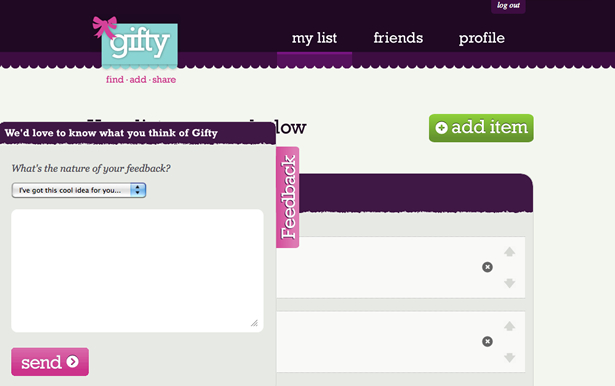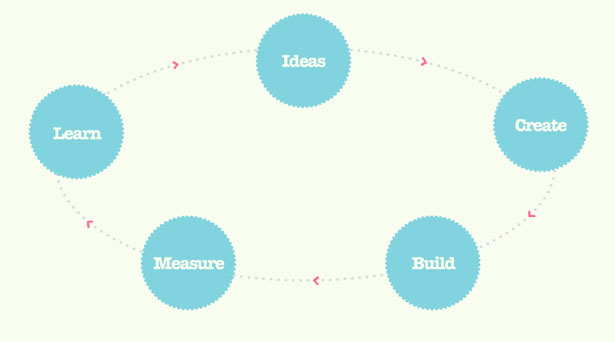The insider’s guide to a successful website: promote (part 3)
Laurence McCahill, co-founder of Spook Studio, explains how his team has simplified the process of creating a website into three key stages. In the last part of this series he provides 10 top tips on promoting your finished site
So now that you’ve got a kick-ass website you’re all set, right? Wrong. It doesn’t matter how good your site is – if nobody even knows it exists, then you can’t exactly consider it a success. You need to get out there and promote it. Whether this is via search, social media, word of mouth or telepathy, you’ll need a plan in order to focus your efforts and start getting some serious traffic.
You also need to consider how you’ll react to feedback from your early users. If your site means anything to your audience, there WILL be feedback and you want to encourage it. You should be keeping track of how people are interacting with your site. It’s rare to get things right first time and once a site is in the big wide world hidden issues will inevitably be discovered. The secret here is to react quickly and appropriately.
You will also need to be able to adapt to the fast moving pace of technology. New services are always springing up left, right and centre. Whether it’s new competition or cool widgets that could enhance your site, you need to keep an eye on them and see how you can modify what you’re doing to take advantage of any opportunities.
So it doesn’t stop here. There’s loads of stuff to do from marketing and engaging, to monitoring and improving... the real work starts now.
1. Decide on a strategy
The first thing most companies ask when their site has gone live is “How do I get to the top of Google?”. A very simple question that unfortunately has no simple answer. You need to have a strategy both short term and long term, with one of your key considerations being how much time, resource and budget you are able to allocate to it. You then need to consider which is the most appropriate approach given these constraints. Your options include Google AdWords, link building, SEO copywriting, blogging, analysis and interpretation of analytics. The fundamental approach is always the same: try something, analyse the results, then modify your approach based on the findings.
2. Go social
Social media is here to stay. And it isn’t just limited to Facebook and Twitter. More and more sites and services trying to exploit this phenomenon are springing up daily. The range of choices may make your head spin but it all depends on who your customer is and what you’re trying to sell. What type of person is your customer? Where do they hang out? What do they want to hear? Social media is a two-way channel. Find your voice, position your soap box and shout your head off ... but remember, you need to listen too! The hard sell doesn’t work in social media – if you try it, people will soon switch off.

3. Know your limits
With all these free services out there, it’s tempting to sign up to everything in the vain misconception that just being a member of the gang is enough. It’s not. You need to engage with these communities, which means spending time doing so.
Get the Creative Bloq Newsletter
Daily design news, reviews, how-tos and more, as picked by the editors.
However, there are only so many hours in the day and you’ve got a business to run. If you’ve got limited resources, then consider where best to target your efforts as well as which service you feel most comfortable using. By enjoying it at the same time you will increase the chances of receiving any benefit.
Alternatively, if you’re flush with cash, you can get a dedicated person to blitz the social web on your behalf. In this case you need to spend time agreeing on what you have to offer and how you want to come across – essentially defining your brand personality. Otherwise you’ll be sending out an inconsistent message and end up confusing your audience.
4. Listen to your users
Whether it’s via social media or a simple feedback form on your website, you need to take every opportunity to listen to the people visiting your site and their needs. This is all valuable information and will help optimise how your site works to make it more relevant and engaging. You’ve launched your site based on a number of assumptions: going live puts these assumptions to the test and if they’re wrong, then you’re going to need to change tack quickly.

5. Be discerning
While listening to your customers is great, not everything you hear is going to be useful. Avoid trying to act on every bit of feedback you get. Remember, some people are never happy (and not everyone likes green!). Your web designer should help you to assess all the feedback you get, picking out the valuable nuggets you can act on to make your site even more effective.
6. Act fast
You need to factor into your budget the ability to react quickly and implement crucial modifications to your website. In an ideal world you’ll have built a strong relationship with your supplier so that they have an in-depth understanding of both your site AND your business.
If you’ve gone with an external agency, don’t ignore them as soon as your site has gone live. Look to engage with them to see how they can improve your site further and react quickly to feedback. Rarely will you ever launch with the finished product. There will always be improvements that can be made, because the web is a constantly evolving medium, and your users' tastes and behaviours will change over time.
7. Iterate, and when you’re done... do it again
If you’re planning on having a long-lasting website with a growing loyal, user base, then it will require lots of TLC. Being a web-based business, you need to embrace the opportunity it provides, to be able to continuously evolve and react to the market. Whether it’s testing different signup forms or adjusting the copy on your homepage, you should always look to improve your conversion rate of visitors to customers. You may find it just takes a minor tweak to see usage, sales or signups shoot through the roof.

8. Monitor
If your site is your main source of revenue, you’ll want to know when it goes down. There are various services out there that will help you with this such as Pingdom. You should be alerted via email (or SMS) when there is significant downtime on your site. You can then work out whether it’s just a one-off or a regular occurrence that needs investigating. It could be your site can’t cope with particular traffic spikes or there may be a bit of code that is slowing it down. Either way, you want to be aware of any problems before your customers are.

9. Try not to break your site
When you’re working fast, the last thing you want is to do is make a change that breaks your site. Make sure your team or supplier has a well-defined process for getting changes live. This usually entails having a version of your site that you use to sign off changes before putting them live. Always make sure you have a system of backups to roll back to, should it all go horribly wrong.
10. What’s offline?
Don’t forget your offline marketing material. Having spent megabucks on a super-slick website why let yourself down with cheap homemade business cards and stationary? Get your supplier to help you produce a coherent marketing pack that complements your online presence and leaves a lasting mark with prospects. And make sure you clearly show your website address and social media profiles.

And this concludes our insider's guide to a successful website. Have we missed anything? Let us know in the comments!

Thank you for reading 5 articles this month* Join now for unlimited access
Enjoy your first month for just £1 / $1 / €1
*Read 5 free articles per month without a subscription

Join now for unlimited access
Try first month for just £1 / $1 / €1
The Creative Bloq team is made up of a group of design fans, and has changed and evolved since Creative Bloq began back in 2012. The current website team consists of eight full-time members of staff: Editor Georgia Coggan, Deputy Editor Rosie Hilder, Ecommerce Editor Beren Neale, Senior News Editor Daniel Piper, Editor, Digital Art and 3D Ian Dean, Tech Reviews Editor Erlingur Einarsson, Ecommerce Writer Beth Nicholls and Staff Writer Natalie Fear, as well as a roster of freelancers from around the world. The ImagineFX magazine team also pitch in, ensuring that content from leading digital art publication ImagineFX is represented on Creative Bloq.
